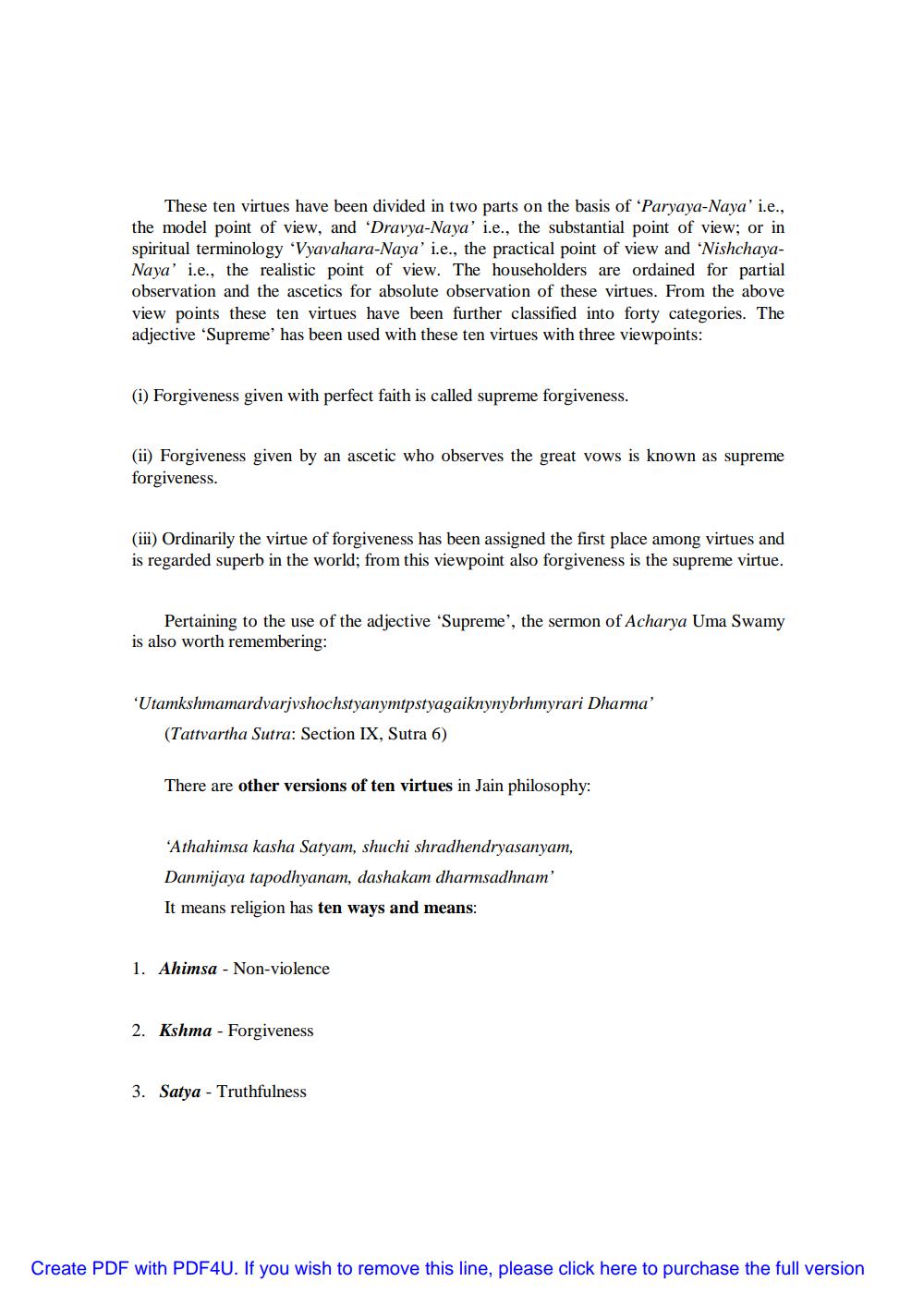Book Title: Ten Universal Virtues Author(s): Ram Kumar Nandi Publisher: Ram Kumar Nandi View full book textPage 7
________________ These ten virtues have been divided in two parts on the basis of 'Paryaya-Naya' i.e., the model point of view, and 'Dravya-Naya' i.e., the substantial point of view; or in spiritual terminology 'Vyavahara-Naya' i.e., the practical point of view and 'NishchayaNaya' i.e., the realistic point of view. The householders are ordained for partial observation and the ascetics for absolute observation of these virtues. From the above view points these ten virtues have been further classified into forty categories. The adjective 'Supreme' has been used with these ten virtues with three viewpoints: (1) Forgiveness given with perfect faith is called supreme forgiveness. (ii) Forgiveness given by an ascetic who observes the great vows is known as supreme forgiveness. (iii) Ordinarily the virtue of forgiveness has been assigned the first place among virtues and is regarded superb in the world; from this viewpoint also forgiveness is the supreme virtue. Pertaining to the use of the adjective 'Supreme', the sermon of Acharya Uma Swamy is also worth remembering: *Utamkshmamardvarjvshochstyanymtpstyagaiknynybrhmyrari Dharma' (Tattvartha Sutra: Section IX, Sutra 6) There are other versions of ten virtues in Jain philosophy: *Athahimsa kasha Satyam, shuchi shradhendryasanyam, Danmijaya tapodhyanam, dashakam dharmsadhnam' It means religion has ten ways and means: 1. Ahimsa - Non-violence 2. Kshma - Forgiveness 3. Satya - Truthfulness Create PDF with PDF4U. If you wish to remove this line, please click here to purchase the full versionPage Navigation
1 ... 5 6 7 8 9 10 11 12 13 14 15 16 17 18 19 20 21 22 23 24 25 26 27 28 29 30 31 32 33 34 35 36 37 38 39 40 41 42 43 44 45 46 47 48 49 50 51 52 53 54 55 56 57 58 59 60 61 62 63 64 65 66 67 68 69 70 71 72 ... 114
